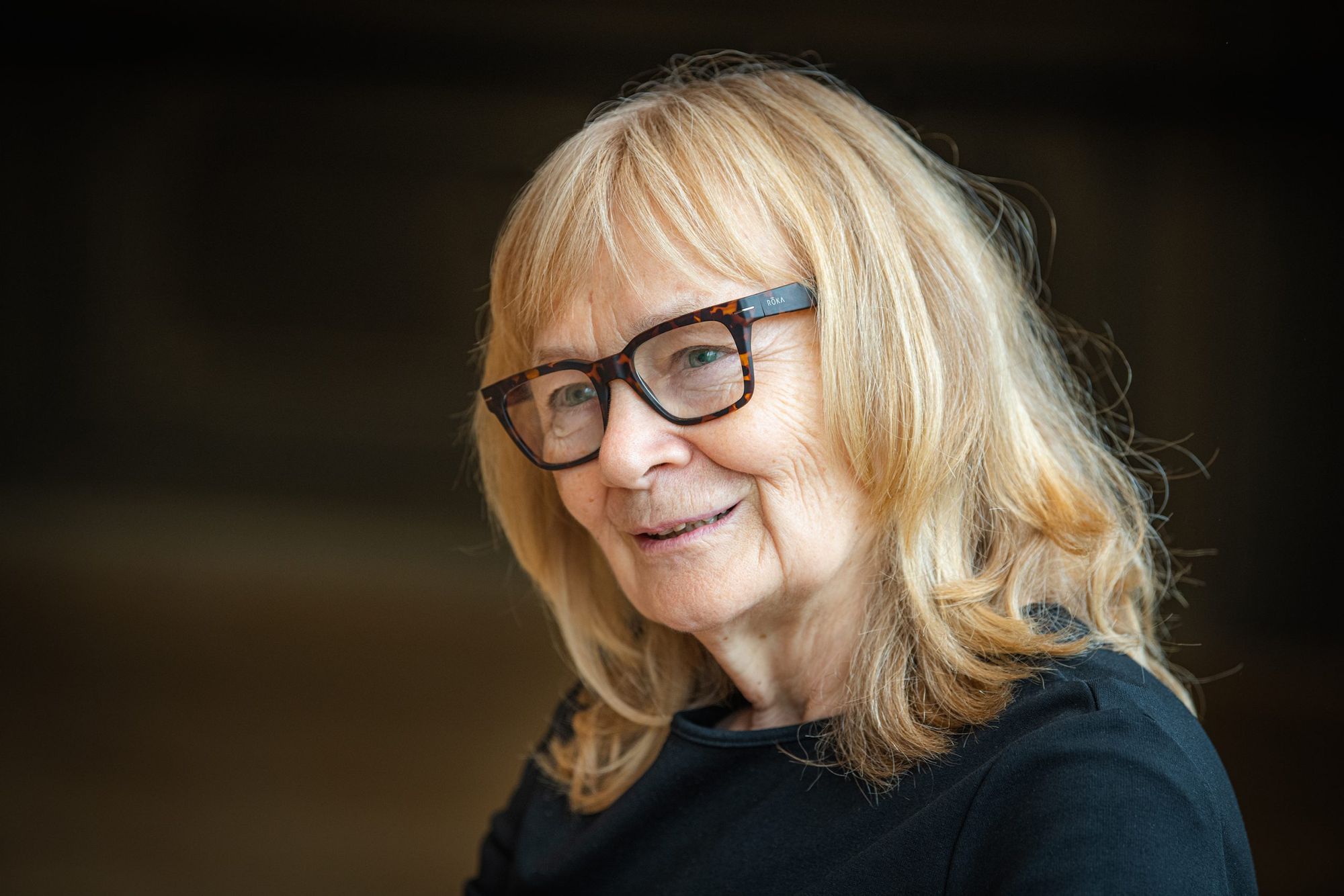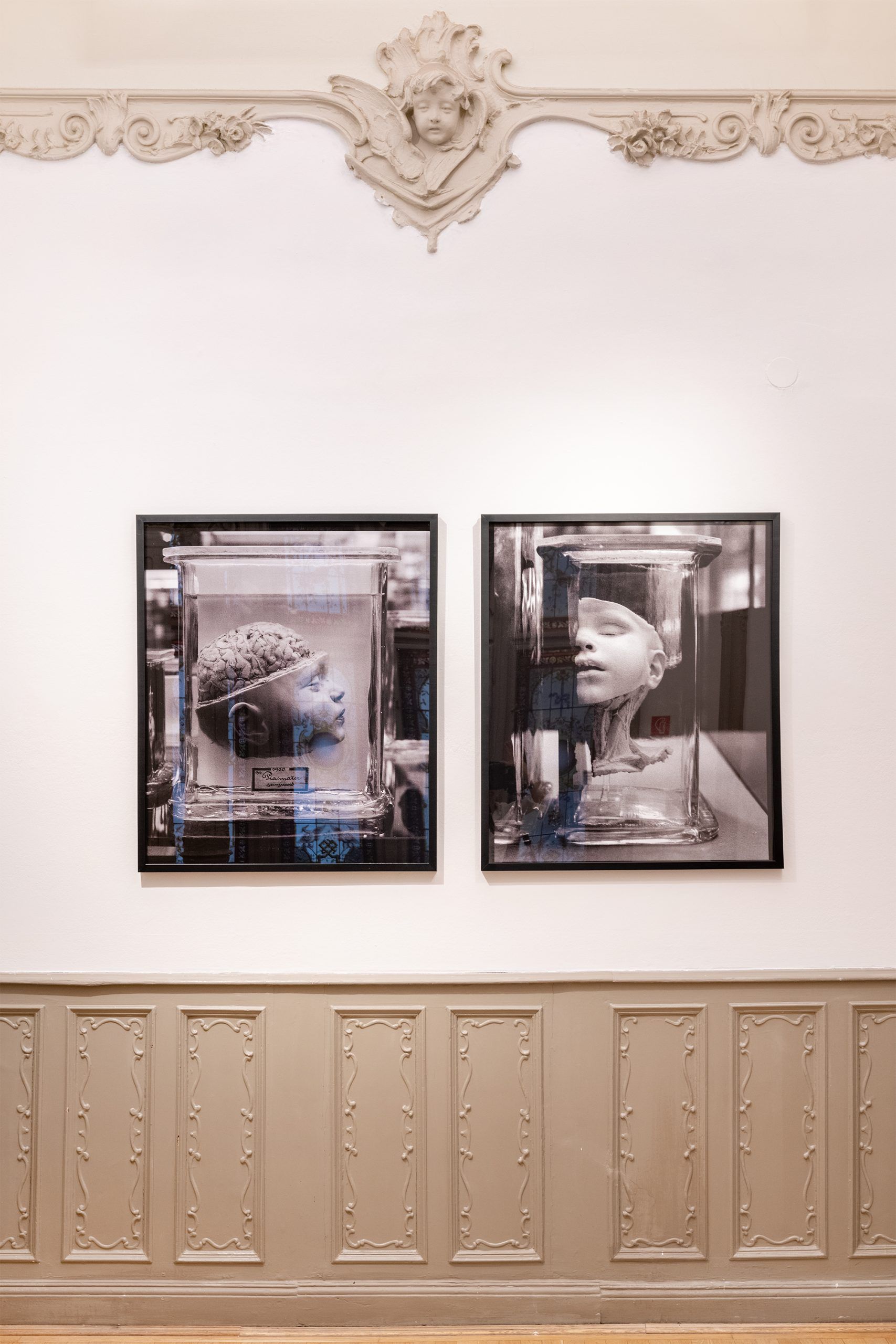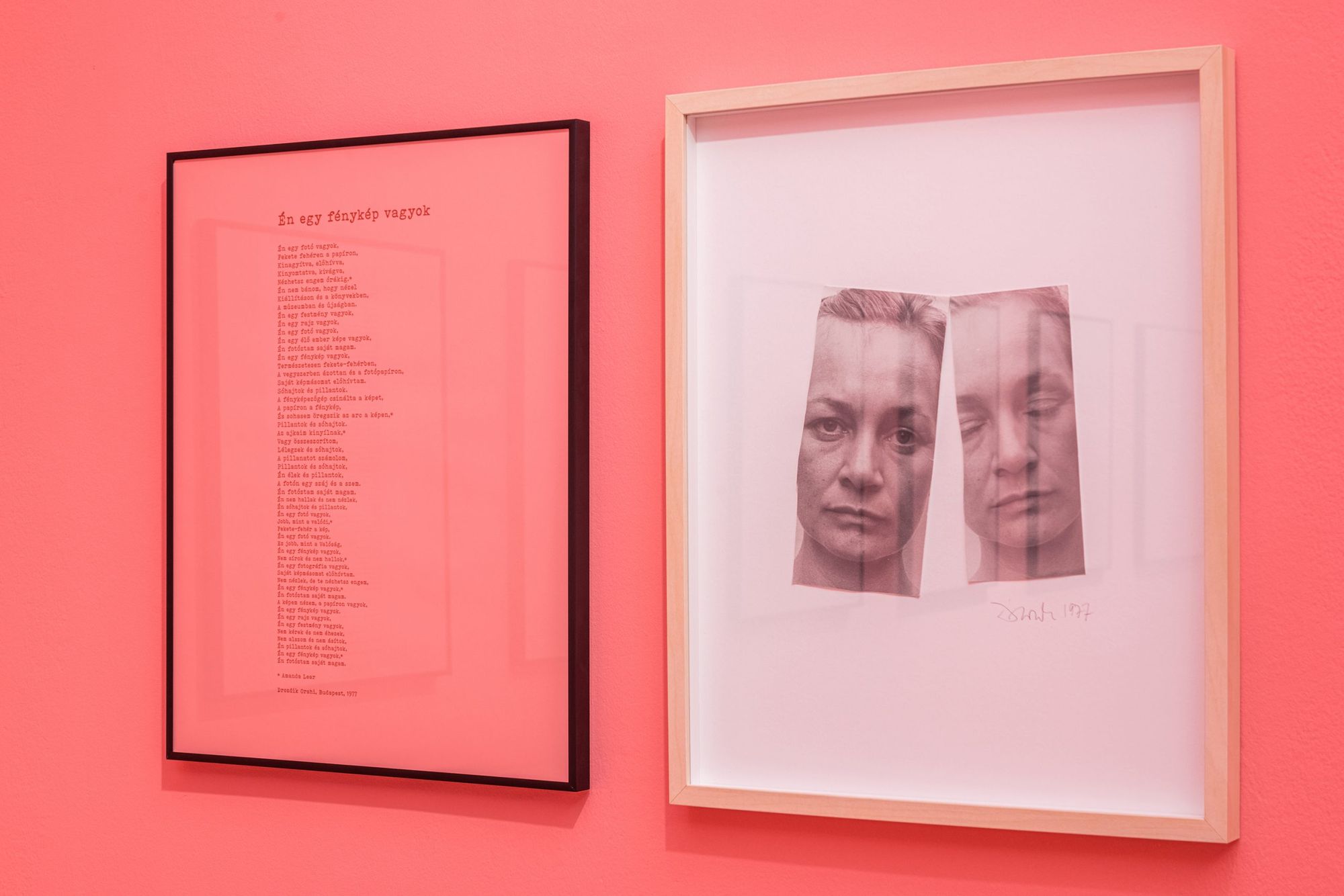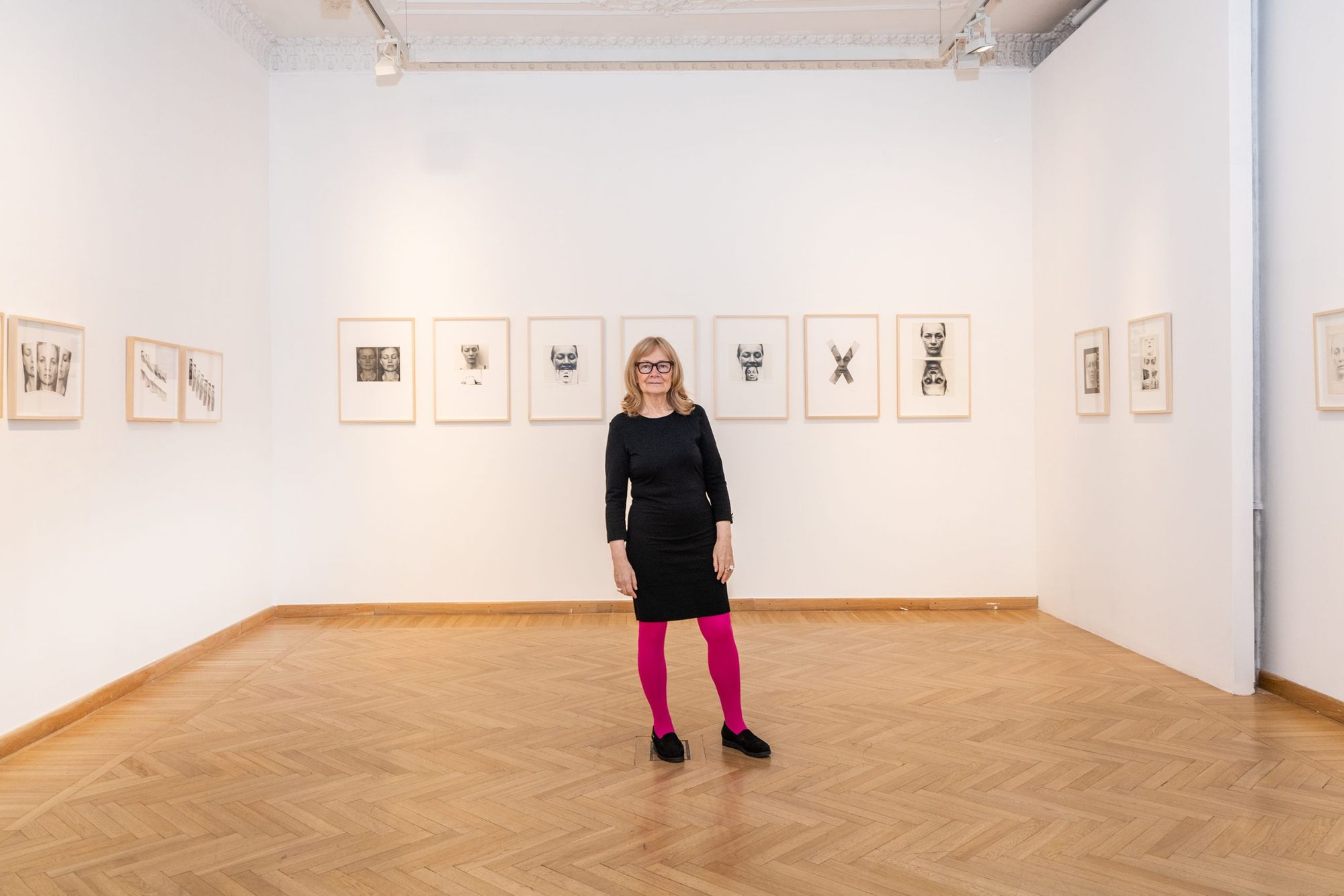What role do women have in science and arts? Challenging patriarchal traditions, Orshi Drozdik asks this question in her latest exhibition at the Mai Manó House in Budapest.
Photography, literature, feminism, performance art, sculpture, painting, drawing, installation, video: 20 years of Orshi Drozdik’s multifaceted creative world is on display at Mai Manó House, in an exhibition centered around photographs and love poems. We interviewed one of the region’s most renowned conceptual artists about her exhibition, The Photograph and the Love Poem 1975-1995, on view until 9 October.

How long have you been taking photographs and why did you turn to this particular medium?
I started taking photographs in 1974-75 when I was studying printmaking at the Hungarian College of Fine Arts. Until then I had mostly been making drawings, etchings, and lithographs there. My first photographs were taken of photographs. It was not a typical start, if I had started at the age of ten I would have probably had to photograph an apple or someone’s face and set up the lighting for it. But I have never done that, and I have never used photography in the traditional way, but always as an inventive and experimental tool. Learning to paint takes years, I think you can learn to photograph in six months, at least the technical part. You start doing it, and eventually, you learn it. I used photography for my conceptual art, so it was an experimental tool for me, an experimental medium.
How did the patriarchal traditions of this art influence your creative process?
I built everything on its critique. When I was a child, I read Margit Kaffka, who once said to Endre Ady: “Andy, for how much would you be a woman instead of me?” I was aware that women think differently and make different art, and I understood this through the writings of Margit Kaffka. My mother was a Hungarian teacher, and she used to have children recite the poem Little Peter walks (Petike jár) at recitation competitions. No one had ever written such a poem before, in patriarchal literature, there are not many examples of someone writing about their son finally starting walking. She introduced a female perspective. As Endre Ady said about her, we no longer have to be ashamed, feminism has arrived in Hungary with Margit Kaffka. So my childhood education became part of my later criticism of patriarchy. The patriarchal tradition of etching and painting is so strong that it was much more difficult for me to carry out my plan: creating the female language of a female perspective. Photography offered me the opportunity to do this.

How important do you think it is for an artist to study and create abroad as well?
You can discover the world in yourself, you don’t have to go out there. I think there are two kinds of artists. One meditates and stays in place, and processes the situation they are in. The other is a wanderer. There were traveling landscape painters in the 19th century, and landscape painters who were not travelers. Some painted only in the studio, and others painted in plein air. It depends on the personality, and it varies from era to era, I think. In my life, traveling has been very important, but cutting the roots is a painful experience.
Was it difficult to be a feminist in Hungary in the 70s?
Socialism had a program called emancipation, which aimed to bring about social equality. In Hungary, even before the First World War, there existed magazines called Woman and Society (A nő és a társadalom) and Woman (A nő), which dealt very seriously with the situation of women, not only in the social sphere but also in the artistic and intellectual spheres. But this early phase of feminism, from the late 19th, early 20th century, was censored and difficult to access. Feminism was a swear word. So my contemporaries who claim to be feminists today were not feminists then, in the 1970s. It was important for me to emphasize it. Nevertheless, my work was very much supported, but mainly the technical knowledge; its innovation, and the feminism part were not promoted.

When did you first leave the country?
In the school year ’75-76, in the summer, I went for a month. I think you could buy $100, that was the limit, and you had to live off that. What could you do then: sleep in a station, find a way to make ends meet. That was my first trip, then I went again in ’78. I lived in Amsterdam, but interestingly enough it wasn’t as intellectually fascinating as Budapest, because that period was very exciting in our capital, and I’m sorry that it hasn’t yet been properly studied. It was fantastic: everything came through, everything came in. The latest intellectual and artistic movements were very important, so when I arrived in New York, I was much more familiar with them than the locals.
How do you split your time between Budapest and New York nowadays?
About fifty-fifty. I have never lived in one city for twelve months, I was always traveling. I also lived in Rome for three years, but even then I wasn’t only in Rome all the time, I was in Capri and New York. I had a studio in Amsterdam for a long time and I also lived in Paris, for much shorter, though. If you lose your roots, you develop aerial roots.

Do you think you have lost your roots? What are these roots connected to in the first place?
Yes, I have lost them. Roots are attached to language, culture, manners, mother, siblings, light, forests, flowers, and many other things. By the time I wrote my DLA thesis in 2003, I had been reading only English for twenty years, and my Hungarian had faded, I had to rebuild it. Few people can think in two languages. I was mostly expressing my emotions in Hungarian. Many times, when I wrote poetry, I wrote it first in Hungarian and translated it into English. But I learned to express the intellectual part better in English.
Is there any award or publication that you consider the greatest recognition of your career so far?
This one! (She points to a beautiful and huge 320-page tome summarizing the exhibition at Mai Manó—the Ed.) I’ve revised it 46 times, like a drawing or a painting. Poor graphic artist! It was a pleasure to work with him, Endre Koronczi, who also did the catalog in Ludwig Museum, and I was very pleased with that too. But now, this is the apple of my eye.

The central theme of the exhibition is the twenty years between 1975 and 1995—why did you highlight this period?
The main part of the exhibition, here at the Mai Manó House, which covers four rooms, is devoted to the period between 1975 and 1981. The fifth room is the grand opus of my life’s work, Adventure in Technos Dystopium—we’ve only sampled a taste of that. It’s also where Edith Simpson, the fictional 18th-century scientist, was introduced.
The images in the Blink and Sigh series were created using a rather complex technology. What was the process like?
Arbitrary, with a need for complete autonomy for the artist and the creator. In order to free yourself from the emotional and intellectual ‘imprints’ that have been hammered into you during your upbringing, you need an arbitrary emotional attitude. In the analog black and white photo lab, we use test strips in the developing tray to determine how dark or light the image should be—from these pieces I assembled the portrait. When I left Hungary, I put this in a box. I was doing offsets at the time, and I wanted to make one of this, as well. But it stayed in that box, so it remained at the idea stage. In the meantime, however, the world has caught up, and artists’ sketches and unfinished pictures have become more interesting for contemporary trends because the contemporary artist no longer ‘over-does’ their pictures, they make a sketch and let the viewer’s imagination put it together. Already in the 19th century, the question of whether an oil sketch is a work of art was raised in relation to Turner. At first, only a painting made from it was considered art, but then sketches somehow became a new genre. These pieces are also sketches, which then became an important element of the contemporary approach. The psyche of the autonomous, creative woman was made up of fragments, but in these fragments you can recognize the self and how I was able to express my deepest layers. For these had been hidden until then because the artistic expression was burdened with the patriarchal system’s expectations and was fossilized into the artistic discourse. The reason why this series is so important to me, and why it has been given such a large space in the exhibition, is that fragmentation also reveals how we put ourselves together and become rivals to the male artist, or more precisely, equal contributors to art history, and how we can carve out a place for our work in the patriarchal system.

Orshi Drozdik: The photograph and the Love Poem 1975-1995
Mai Manó House
31 August—9 October 2022
More information to be found here.
Photos: Krisztina Szalay

In and out of focus—photos of the Hungarian edgelands

A Mexican hotel with a pool under its arches










